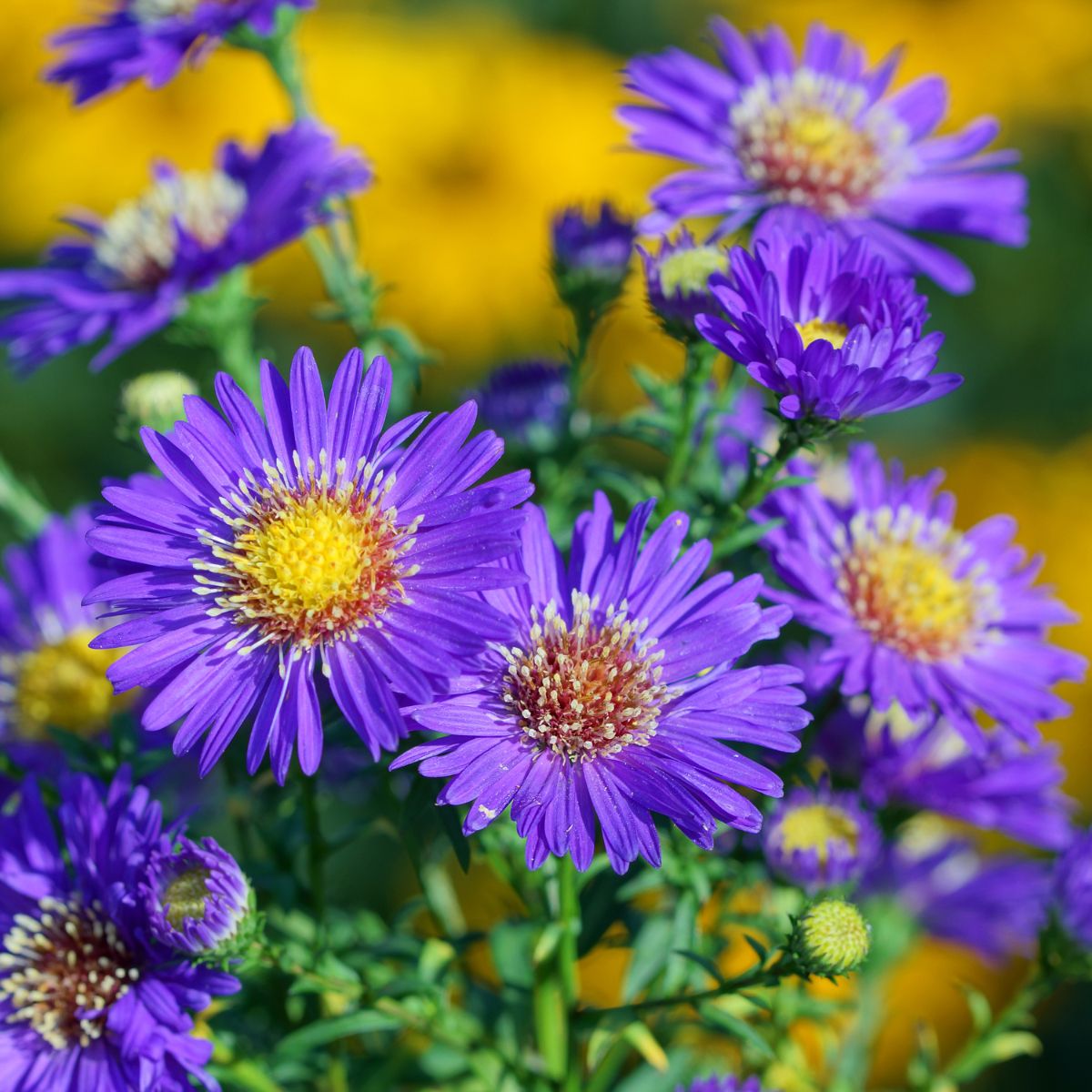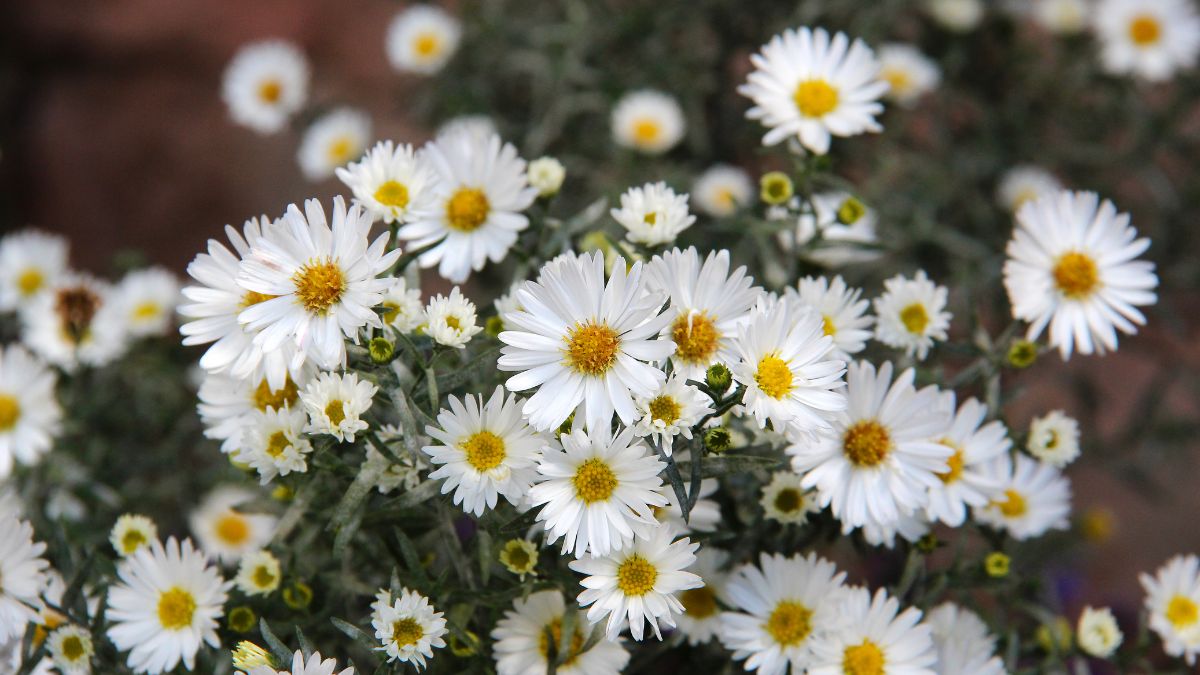As the seasons transition from the vibrant blooms of summer to the warm, earthy autumn hues, one perennial plant remains a radiant star in the garden – the Aster. With its diverse array of varieties, each boasting an enchanting spectrum of colors and sizes, Asters have firmly established themselves as beloved additions to any garden landscape.
In this comprehensive article, we invite you to embark on a journey through the captivating world of Asters. We'll delve into their history, classification, essential cultivation tips, and their crucial role in supporting biodiversity. Prepare to uncover why Asters are an absolute must-have in your garden.

Read Next
Asters Unveiled
- The Aster Family: Asters belong to the Asteraceae family, known as the daisy family, which includes sunflowers and chrysanthemums.
- Varieties and Classification: With over 180 recognized species and numerous cultivars, Asters offer a wide array of choices.
Through History
- Native American Medicinal Use: Native American tribes used Asters, like Symphyotrichum novae-angliae, for their medicinal properties.
- Ancient Greek Symbolism: Asters' name derives from the Greek word for "star," reflecting their star-like flower shape.



Common Types
Asters are a diverse group of plants with numerous species and varieties. Here are some common types of Asters:
- New England Aster (Symphyotrichum novae-angliae): Known for its bold purple, magenta, and deep blue flowers, this tall Aster is a favorite among gardeners.
- Smooth Aster (Symphyotrichum laeve): Characterized by its pale blue to lavender flowers, this Aster adds a soft touch to garden landscapes.
- Michaelmas Daisy (Aster amellus): This European native Aster comes in various shades of pink, purple, and blue and is known for its compact growth.
- White Wood Aster (Eurybia divaricata): Featuring small, white, daisy-like flowers, this Aster is well-suited for woodland gardens.
- Sky Blue Aster (Symphyotrichum oolentangiense): True to its name, this Aster boasts sky-blue to pale lavender flowers, making it a delightful addition to gardens.
- Heath Aster (Symphyotrichum ericoides): With tiny, white, daisy-like flowers, this Aster is well-suited for rocky and sandy soils.
- Purple Dome Aster (Symphyotrichum novae-angliae 'Purple Dome'): A compact variety of New England Aster with vivid purple blooms.
- Wood's Blue Aster (Symphyotrichum cordifolium): Known for its light blue flowers and heart-shaped leaves, it's a charming woodland Aster.
- New York Aster (Symphyotrichum novi-belgii): This Aster comes in a variety of colors, including pink, purple, and blue, and is native to eastern North America.
- Calico Aster (Symphyotrichum lateriflorum): Named for its white or pale pink flowers with small dark centers, it's a delicate and attractive variety.
Cultivating Asters
- Choosing the Right Variety: Consider factors like size, color, and blooming time when selecting Asters for your garden.
- Soil and Sun Requirements: Asters thrive in well-draining soil with full sun to partial shade.
- Planting Asters: Proper planting techniques and spacing ensure healthy growth.
- Watering and Maintenance: Maintain soil moisture, apply mulch, and deadhead spent blooms for continuous flowering.
Asters: A Kaleidoscope of Colors
- Purple and Blue Asters: New England Asters (Symphyotrichum novae-angliae) offer bold purples and blues.
- Pink and Red Asters: Aster novi-belgii cultivars feature shades of pink and red.
- White and Cream Asters: Delicate white or cream-colored Asters provide a soft contrast.



Asters and Biodiversity
- Pollinator Paradise: Asters attract late-season pollinators, such as bees and butterflies, providing crucial nectar and pollen.
- Supporting Local Wildlife: Asters benefit wildlife, offering seeds for birds and shelter for insects and small creatures.
- Companion Planting: Asters complement other garden species and extend nectar availability for pollinators.
Common Pests and Diseases
- Aphids: Regular inspection and gentle removal methods combat aphid infestations.
- Powdery Mildew: Address powdery mildew with improved air circulation and, if necessary, fungicides.
Winter Care
- Mulch: Apply organic mulch to protect Aster roots from freezing temperatures.
- Pruning: In late fall or early winter, prune Asters to encourage healthy regrowth in spring.
Conclusion: Asters - The Autumn Stars of Your Garden
Incorporating Asters adds a burst of colors and supports pollinators and wildlife. These perennials offer beauty, history, and a connection to nature.
Whether you prefer regal purples, vibrant pinks, or delicate whites, Asters creates a symphony of colors that shines year after year.
Don't miss cultivating Asters and enjoying autumn's stars in your garden.





Comments
No Comments